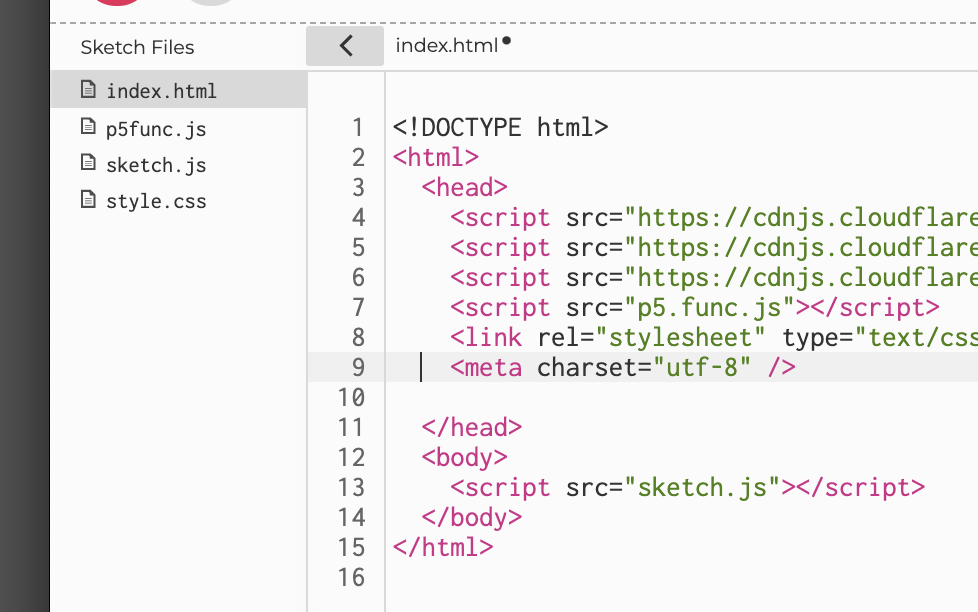Agenda
- Shaping Functions
- Work session
- Small group breakouts
Shaping Functions
Shaping functions (also called easing functions, tweens, and unit generators) can be used to create expressive nonlinear movement. They are a key building block of animation — it’s what people are referring to when they talk about “ease-in, ease-out”. In this lecture we consider the (very simple!) code necessary to make them.
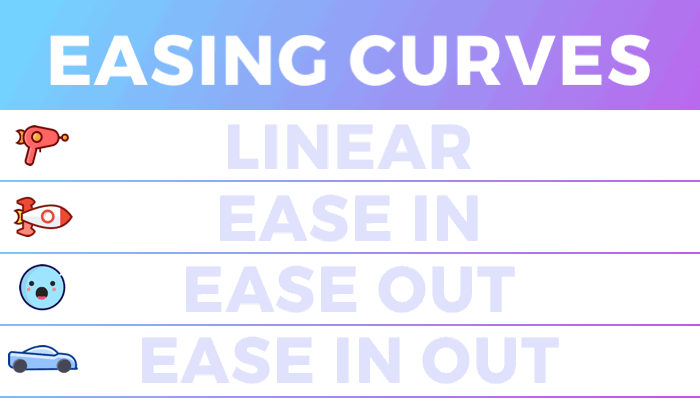
About 20 years ago, Robert Penner released code for a bunch of common easing functions. You’ll see them everywhere; there are implementations for every computer language:
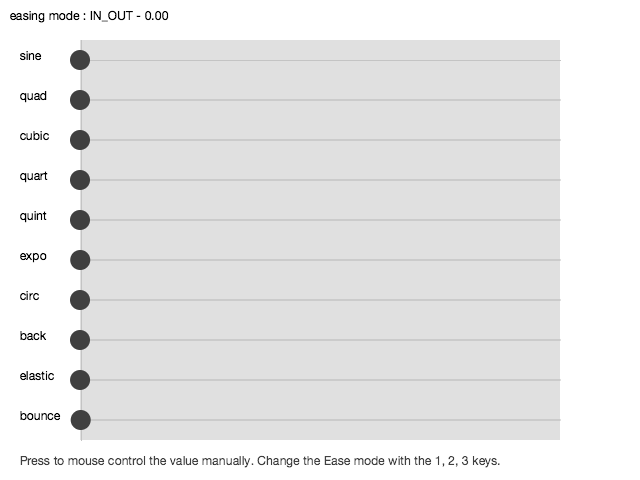
It can be interesting to control different properties of movement (e.g. x and y) with different easing functions. This demo shows that.
Some of the most useful easing functions go back-and-forth:
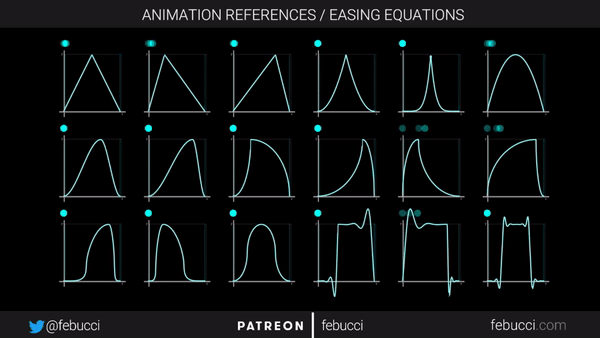
- You can produce easing functions trivially with something as simple as the map() function, squaring and square rooting, sq() and sqrt(). Boom, done.
- For a wider range of options, Luke DuBois’ p5.js-func (JavaScript) is a proper p5.js library for easing functions which you can include into your project. We’ll discuss this in a few minutes, below.
For my own 12-minute overview of this topic that you can view on your own time, see this video:
p5-createloop (which we are using to generate GIF loops for us) provides a useful number called animLoop.progress, valued from 0…1, which represents the percentage of how far we are in the loop at any given moment. 0 represents the beginning of the loop, 1 is the end.
Here’s a sketch showing the use of animLoop.progress. It also introduces some of the simplest possible shaping functions (sq and sqrt):
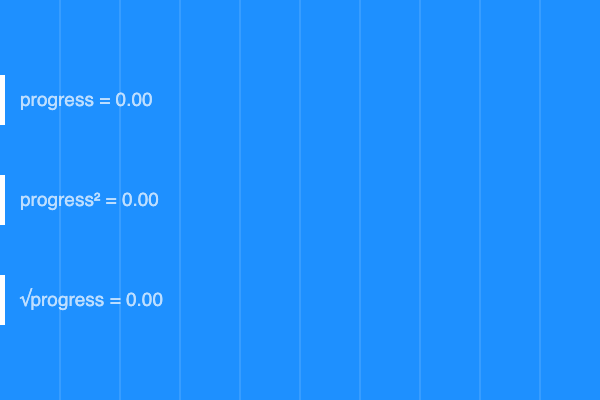
This sketch demonstrates some ways in which the animLoop.progress variable can be used to govern many different kinds of visual properties— such as size, angle, rotation, opacity, count, etc.
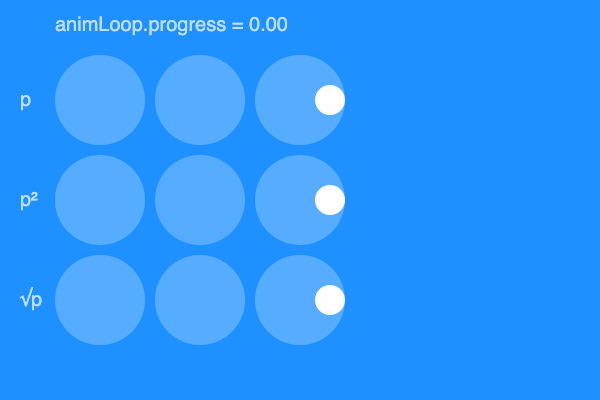
Here’s a reminder that you can eliminate visual discontinuity by going all the way offscreen:
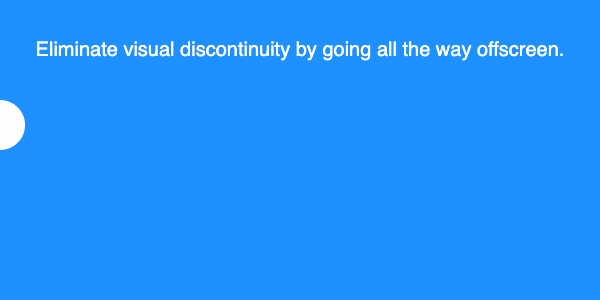
The p5.js-func library gives us a very wide range of easing functions:
- p5-func reference
- See Luke’s animation demo
- Golan’s ultra-minimal demo
- Golan’s plot demo
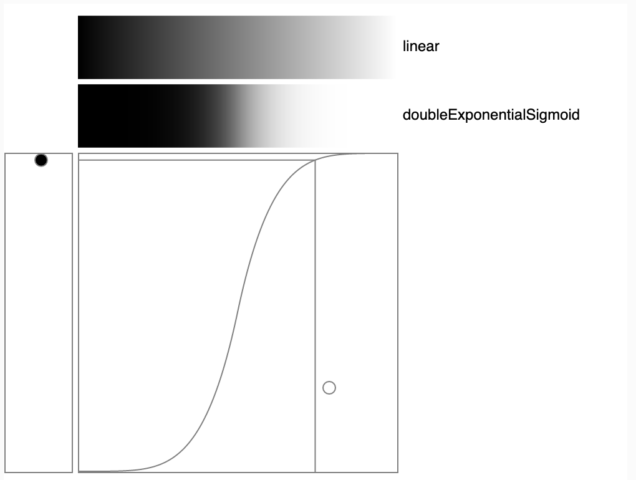
Here’s a sketch that uses both the p5-func library for easing functions, AND the p5-createloop library to generate GIFs. Note how some of the easing functions take parameters (knobs) that articulate how they perform. You might want to use this as a technical template for your homework…..
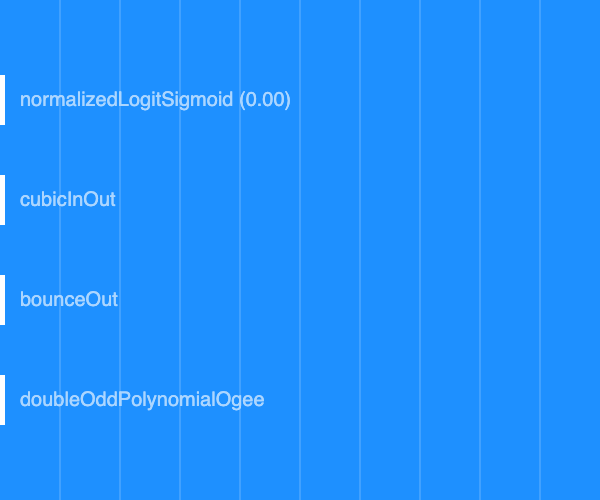
Here’s a sketch showing the use of shaping functions to alter the periodic behavior of a sinusoid. Notice how you can create smooth periodic motions with a “limp” or other irregular timing:
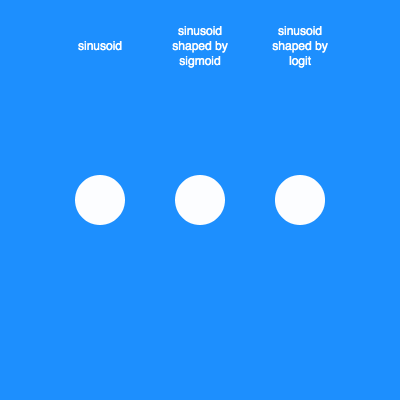
— Of course, you still have this template project for a seamless noise loop:

How to use p5func in the Editor:
- Go to https://idmnyu.github.io/p5.js-func/. Download the zip.
- Unzip the archive. Locate p5func.js in its ‘lib’ folder.
- At the https://editor.p5js.org/, create a new sketch (File > New).
- In your sketch, click on the small > character to open up your files.
- Click the V character, select ‘Upload file’.
- Drag the p5func.js into the indicated region.
- In your index.html file, add the p5.func.min.js script to the head. (See the image below.)
- Win!
Your index.html and project should look like this:
